Sumo vs Conventional Deadlift: Difference Explained
Author:
Reviewed by:
(21 years of Oly Lifting experience)
Unlock your full potential by engaging with our experts and community! Have questions about your fitness journey or looking for expert advice on weightlifting techniques? Don’t hesitate — leave a comment below and Sergii Putsov will provide a personalized answer and insights to help you reach your goals.
Torokhtiy is reader-supported. Some links are affiliate links, and we may earn a commission at no extra cost to you. See our disclosure page for details.
The Sumo VS Conventional deadlift has been a hot topic in recent years. Advocates for both exercises are adding both empirical data and personal experience to the debate.
While old-school powerlifters may argue that the Sumo deadlift is easier, new-era athletes believe this is a positive, since both exercises give similar workout results.
Let’s examine both exercises to see which is better: sumo or conventional deadlift. But first, a brief rundown on the topic.
There is no right or wrong choice between the Sumo VS Conventional deadlift. The two exercises are similar on a fundamental level, targeting nearly identical muscle groups in the core and lower body. Additionally, the athletic and health benefits of sumo deadlifts overlap with the conventional deadlift.
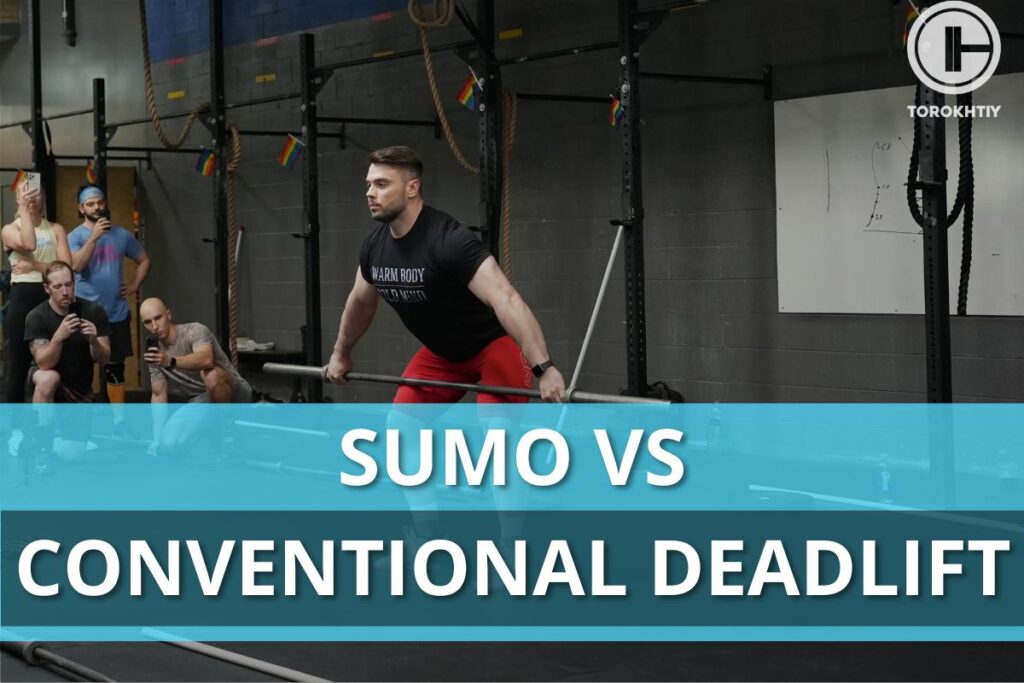
| Lift Type | Sumo Deadlift | Conventional Deadlift |
| Exercise Difficulty | 4/5 | 4.5/5 |
| Grip Width | Narrow | Wide |
| Stance | Wide | Narrow |
| Overlapping Muscle Groups | • Glutes • Quadriceps • Adductors • Hamstrings • Erector Spinae • Trapezius • Rhomboids • Latissimus Dorsi • Abdominals • Forearms | • Glutes • Quadriceps • Adductors • Hamstrings • Erector Spinae • Trapezius • Rhomboids • Latissimus Dorsi • Abdominals • Forearms |
| Primary Muscles Worked | Hips and adductors | Glutes, hamstrings, and traps |
| Recommended For | Lower body development | Posterior and core strength |
What Are Conventional Deadlifts?
Benefits Of Conventional Deadlifts
The conventional deadlift is a compound exercise that targets multiple muscle groups at once. Though it primarily engages the lower body and core, it is a near full-body exercise. On top of being excellent for strength building and muscle development, it serves as a highly functional exercise as well.
When done correctly, the deadlift works out your glutes, hamstrings, quadriceps, lower back, upper back, traps, forearms, and more. The exercise requires a strong core, a stable back, and a tight grip to maintain proper form throughout it. Thereby, by performing regular deadlifts, you can expect to see improvements in your core strength, stability, posture, grip strength, etc.
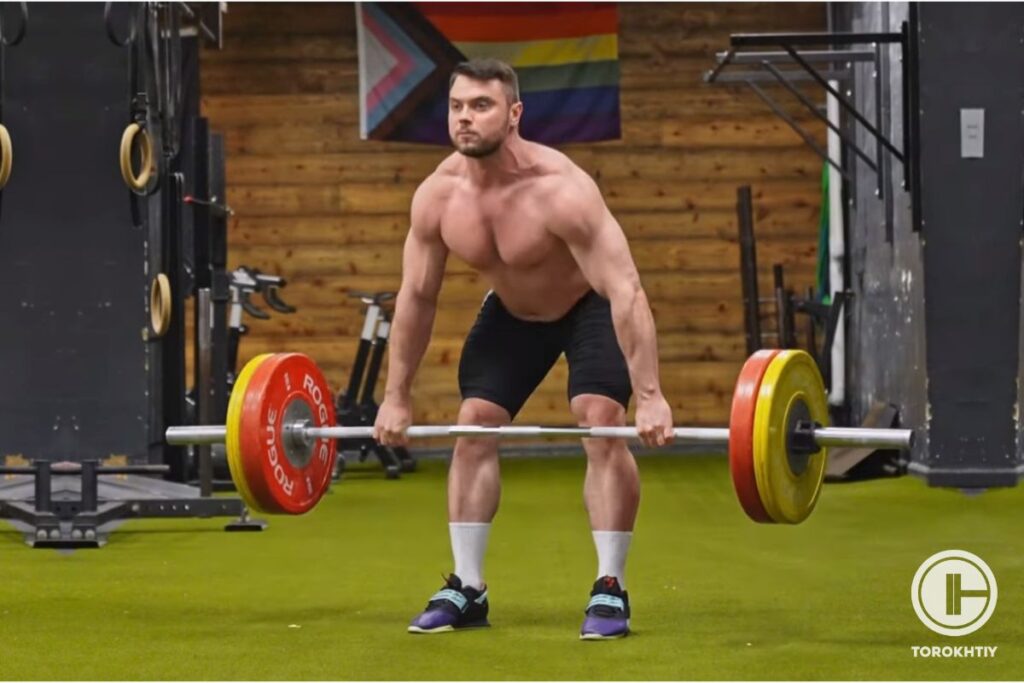
The deadlift is a weight-bearing exercise that places stress on your entire body. This stress will, among other things, increase your bone density, boost your metabolism, burn calories, and improve your endurance both physically and mentally. These benefits can lead to greater quality of life, especially as you age, by making you less prone to common aging issues such as bone fractures, cardiovascular disease, back pain, but also cognitive decline.
Cons Of The Conventional Deadlifting
Even though deadlifts are highly beneficial, like all weight-bearing exercises, there are some drawbacks to doing them, too. Namely, the high number of engaged muscles and overall body stress make the deadlift quite physically taxing. On top of that, it requires learning and maintaining proper form to be executed correctly.
As such, the deadlift is a highly demanding exercise that can’t be picked up on a whim and simply thrust into any workout. Inadequate integration of the deadlift into your exercise regimen can easily lead to overtraining, fatigue, and injury.
Deadlift injuries can be particularly troublesome, as the most common ones include your lower back, core, knees, hips, and shoulders. Injuring the joints and muscle groups surrounding these areas can easily take even the most experienced athlete out of training for a while, not to mention long-term risks that may require surgery to fix.
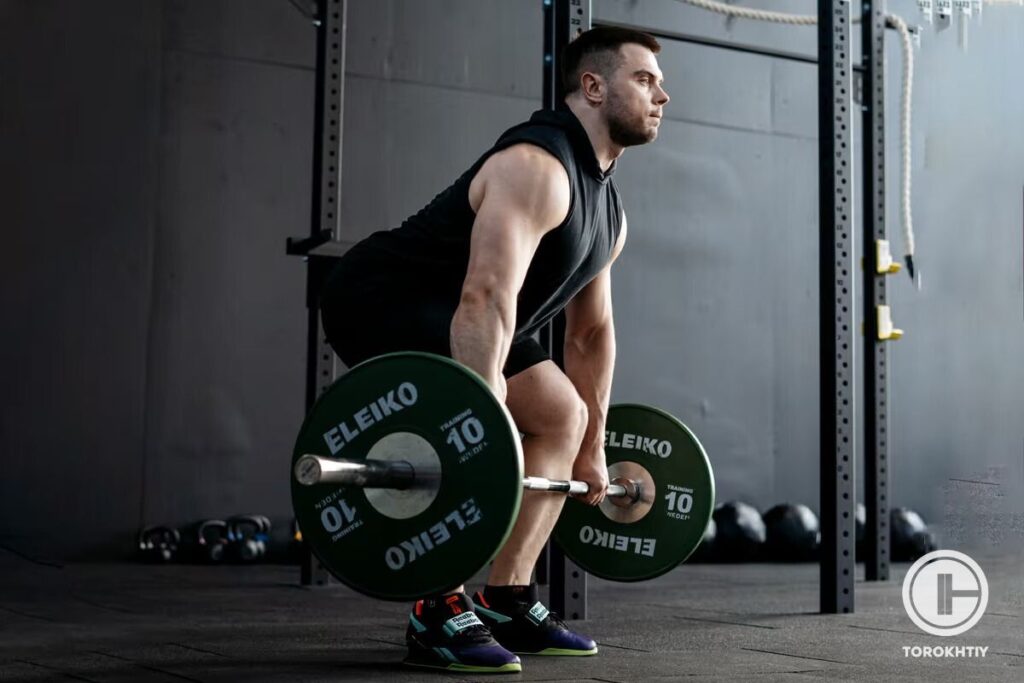
For these reasons, it’s important to engage in deadlifts with extreme caution, prioritize form above all (especially weight), and listen to your body.
How To Do Conventional Deadlifts
Here’s a step-by-step guide to doing conventional deadlifts:
- Stand with your feet at shoulder-width apart, with the barbell on the floor in front of you.
- The bar should be centered over your feet, with your toes pointing slightly outward and your shins close to and almost touching the bar.
- Bend down with a straight back, hinging at the hips, and grip the bar with your hands shoulder-width apart.
- Keep your arms straight and your shoulders pulled back and down.
- Your spine should be straight, with your chest up and shoulders back, and avoid rounding your back.
- Your head should be in a neutral position, looking forward or slightly upward.
- Before you start, take a deep breath into your diaphragm (stomach) and tighten your core.
- Keep your feet firmly planted, push through your heels, and start lifting the bar off the ground by extending your hips, flexing your legs, and raising your chest.
- As you’re lifting, your hips and shoulders should rise at the same time.
- Avoid using your arms for added strength and keep them straight throughout the lift.
- The bar should make a strictly upwards trajectory and stay close to your body, even scraping your shins on its way up and down.
- Avoid jerking the weight up or rounding your back.
- Once the bar has cleared your knee height, stand up straight with your chest up, shoulders pulled back, and your hips fully extended.
- Breathe out and lower the bar back down, following the same movement pattern in reverse.
- Again, keep your body straight and core tight, and avoid lifting with your arms or rounding your back.
- The bar should have a controlled descent, and not be dropped unless required to due to outside factors.
What Are Sumo Deadlifts?
Benefits Of Sumo Deadlifts
The Sumo Deadlift is a variation of the conventional deadlift that is becoming increasingly popular in the fitness world. This deadlift variation got its name because of the wide stance, similar to a Sumo wrestler’s stance, that the lifter uses when performing the exercise. This wide stance shortens the range of motion required to lift the barbell, which can make it easier for those with mobility or flexibility issues. The Sumo Deadlift mirrors the conventional deadlift in many ways.
Firstly, it primarily targets nearly identical muscle groups, including the quadriceps, lower back, upper back, traps, forearms, core, etc. However, because of the wide stance, the sumo deadlift places less stress on the core and back, and more emphasis on the hips, glutes, and quads. This makes Sumo deadlift a good deadlift substitute for those who struggle with lower back pain or similar injuries. Conversely, it makes it a popular compound exercise for lower body muscle building.
Overall, the sumo deadlift has the same athletic, biomechanical, and health benefits and is a popular substitute for the conventional deadlift.
Follow us!

Free!
Get a 2-week Weightlifting Program as a bonus for the subscription to kickstart your training plan!

Free!
Cons Of The Sumo Deadlift
The Sumo deadlift has nearly identical cons as the conventional deadlift, namely being a highly-demanding exercise.
However, there are some noteworthy differences. Whilst the Sumo deadlift places less stress on the lower back and core, it results in overall greater knee and hip moments, which leads to a slightly higher risk of injury in those areas. Additionally, due to the wider stance, the exercise requires greater hip mobility and puts added stress on the groin area.
The 45-degree angle foot stance also has a few negatives worth nothing. Firstly, it puts your feet in an unnatural position, which adds pressure on your ankles and knees. It also requires more effort in stabilizing the hips and maintaining proper alignment throughout the lift, increasing the risk of slipping or losing balance.
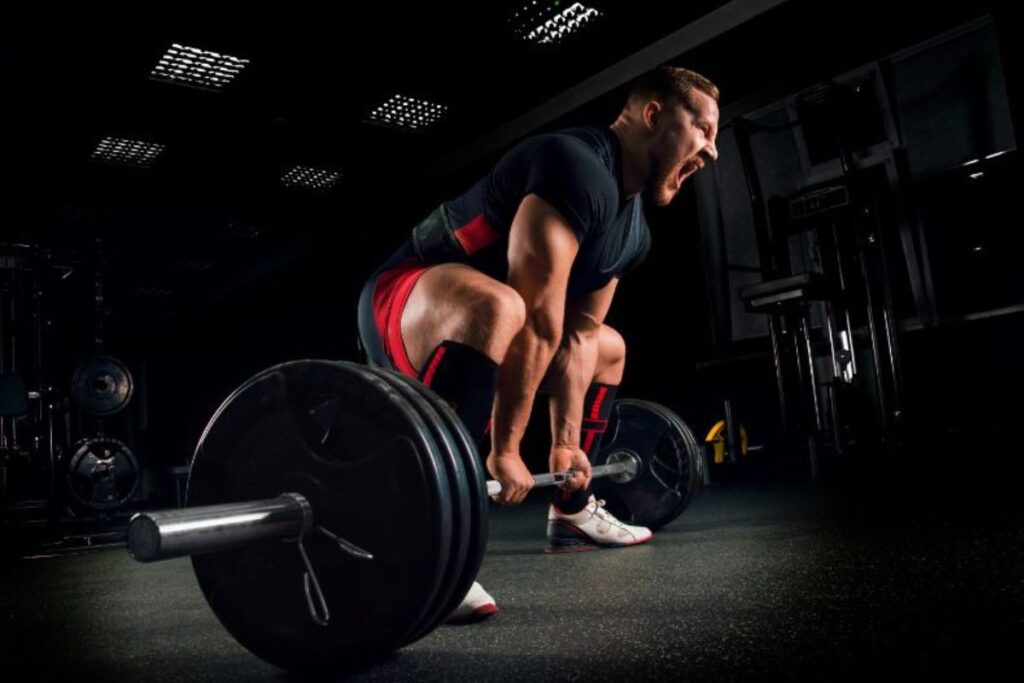
How To Do Sumo Deadlifts
Here’s a step-by-step guide to Sumo Deadlifts:
- Start by standing with your feet slightly wider than your shoulders, then point outward with your toes at a 45-degree angle.
- Position the barbell close to your shins, with your hands gripping the bar inside your legs.
- Keep your back straight and your chest up, and brace your core before beginning the lift.
- Take a deep breath into your diaphragm and engage your glutes, quads, and adductors.
- Push through your heels and drive your hips forward to lift the bar off the ground, ensuring that your shoulders and hips rise at the same time.
- Keep the bar close to your body and ensure that it moves in a vertical path. As you lift, your knees should move outwards, and your shins should stay as vertical as possible.
- Maintain a neutral spine throughout the lift, avoiding rounding your back or hyperextending your spine at the top.
- Stand up tall with your hips fully extended at the top of the lift, with your shoulders pulled back and down, and your chest up.
- Take a breath at the top, and then lower the bar down in a controlled manner, keeping your back straight and your core tight.
- Keep the bar close to your body as you lower it, allowing your knees to move outwards again as needed.
- Lower the bar all the way to the floor before beginning your next repetition.
- Avoid using your arms for added strength and keep them straight throughout the lift.
- The bar should make a strictly upwards trajectory and stay close to your body, even scraping your legs on its way up and down.
- Avoid jerking the weight up or rounding your back.
- Remember to prioritize form over weight, and to warm up properly before attempting any heavy lifts.
- The bar should have a controlled descent, not be dropped, unless required due to outside factors.
The Sumo VS Conventional Deadlift: Similarities
Exercise Difficulty
Both deadlift variations are highly technical exercises that require proper technique and form to execute properly. Apart from physical strength, they also require good coordination, stability, and focus. For these reasons, they’re considered fairly difficult by exercise standards, even for non-beginners.
Compound Exercises
Compound exercises are those that target various muscle groups at once, as opposed to isolated exercises that only target one at a time. Both the Sumo and conventional deadlift are compound exercises with similar functionality.
Overlapping Muscle Groups
When comparing the sumo deadlift vs conventional deadlifts, we see plenty of overlap in the main targeted muscle groups. These overlapping muscle groups include the glutes, hamstrings, erector spinae, quadriceps, adductors, and calves.
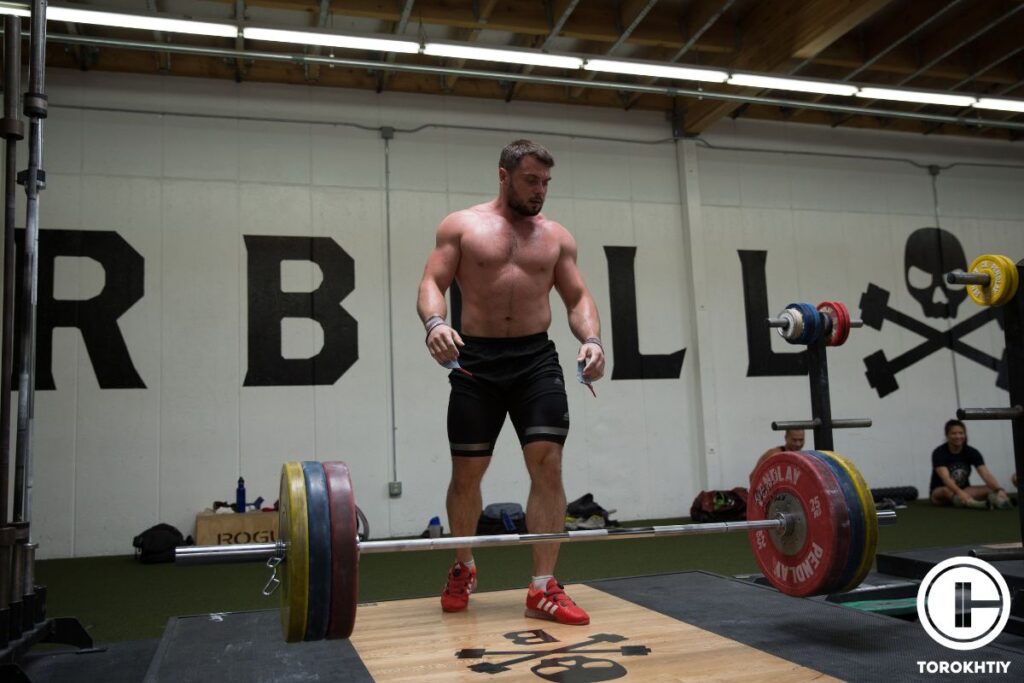
Similar Benefits
Both the conventional and Sumo deadlift offers a range of benefits. By targeting major muscle groups of the posterior chain, including the glutes, hamstrings, and lower back, these lifts are also great for improving overall core strength, stability, and posture. Deadlifting can also help to boost your metabolism, burn calories, and improve your physical and mental endurance.
They also help develop grip strength, which is not only important for daily activities or playing various sports but has been linked to overall mental health as well.
Furthermore, regular deadlifting can lead to improvements in bone density, which is especially important for older individuals who may be at risk of osteoporosis. These benefits can contribute to a better quality of life and overall well-being, regardless of age or fitness level.
The Sumo VS Conventional Deadlift: Differences
Exercise Stance
The most obvious difference when observing the sumo deadlift vs deadlift is the stance.
The sumo deadlift involves a wide stance with the feet pointing outwards at a 45-degree angle, and the hands are placed inside the legs. The conventional deadlift, on the other hand, involves a narrower stance with the feet pointing forward, and the hands placed outside the legs.
The sumo stance may require a higher degree of mobility and flexibility than a traditional deadlift, particularly in the hip area, but it also allows for generating more force through the legs.
Grip Position
The Sumo deadlift has a narrower grip position than the standard deadlift. As a result, athletes can expect greater forearm muscle engagement in the standard deadlift, leading to an overall increased arm and grip strength.
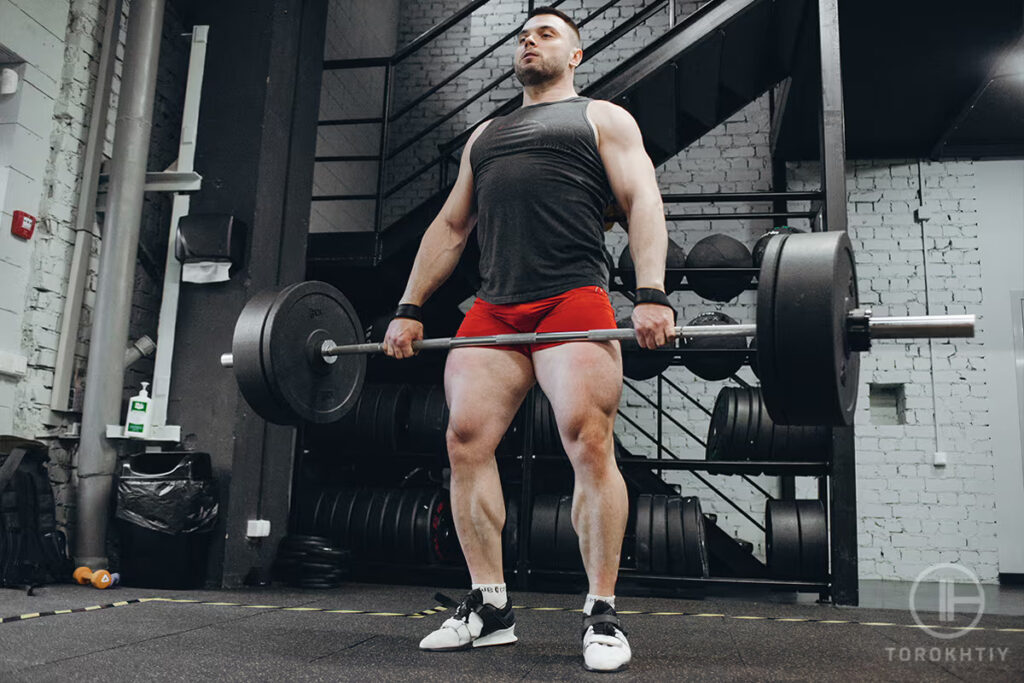
Torso Position
Due to the wider stance of the sumo deadlift, the lifter’s torso will be positioned more upright during the entire exercise. This puts noticeably less stress on the core and lower back, which are the most common place of injury of the traditional deadlift. For this reason, many athletes consider the Sumo deadlift safer, particularly if their workout goal is strictly hitting lower body muscles without core engagement.
Range Of Motion
The sumo deadlift has a shorter range of motion (ROM) than the conventional deadlift. This ROM difference helps the sumo deadlift put less stress on the lower back but requires greater activation of the hips and legs. The conventional deadlift, on the other hand, involves a longer range of motion and places greater stress on the lower back.
Both exercise variations can be effective for building lower-body strength and muscle mass, but these slight differences may make one better aligned with your fitness goals or less taxing on the body depending on your personal health.
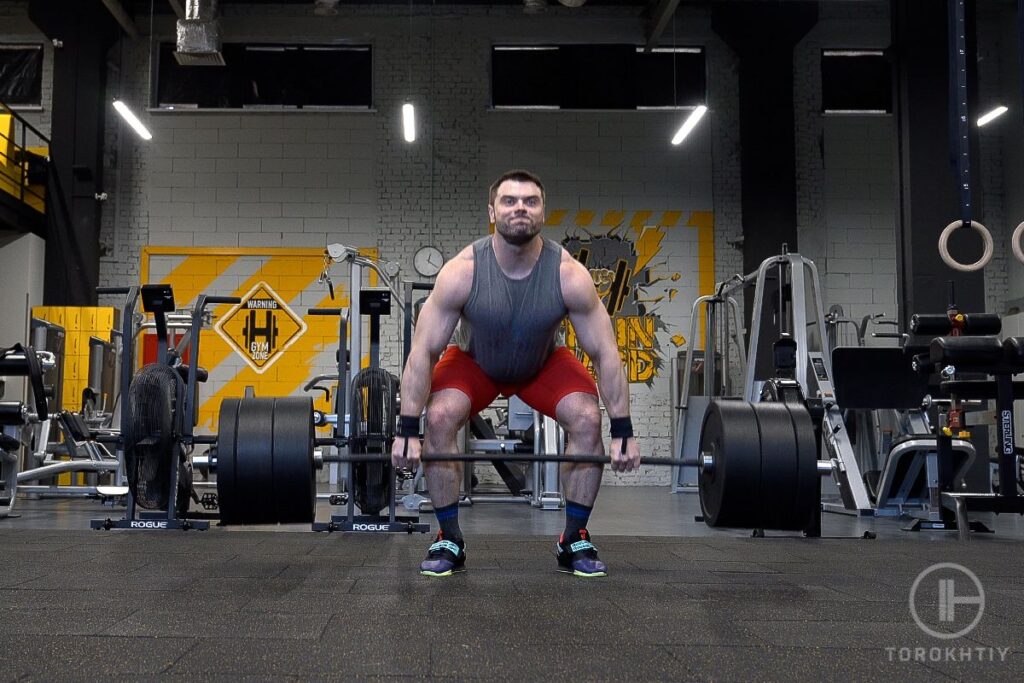
Differing Muscle Groups
As mentioned earlier, the worked muscle groups in the sumo deadlift vs regular deadlift are similar, but there are some variations.
Namely, the sumo deadlift places more emphasis on the quads and inner thighs, while the conventional deadlift targets the lower back and hamstrings more directly.
This makes the sumo deadlift highly preferable for developing lower body muscles, particularly in the legs, while the conventional deadlift helps with core stability and developing upper-to-lower body connections.
So, Conventional Or Sumo Deadlift, Which Is Best For You?
The short answer is – neither the conventional or sumo deadlift is technically better. When comparing the sumo deadlift VS regular deadlift, the conclusion is that both are highly-effective exercises that overlap in many ways. It’s highly suggested you try both variants and see which works best for you.
Depending on your training goals, you may want to alter between the two. For example, you should see better results in lower body muscle development with the Sumo deadlift, while conventional deadlifts will strengthen your core and back to a greater degree.
The research concludes that athletes with shorter arms and legs, as well as a shorter torso length relative to their limb length, tended to perform better in the sumo deadlift. Conversely, athletes with longer arms and legs and a longer torso length relative to their limb length tended to perform better in the conventional deadlift.
FAQ
Is Sumo Or Conventional Deadlift Easier?
So, is the sumo or conventional deadlift easier? There isn’t a simple answer, however, there’s both anecdotal and empirical evidence.
The angled foot placement of the sumo deadlift allows for more force to be developed through the legs. Furthermore, the sumo starting position has your torso in a more upright position, which means it puts less pressure on your core and lower back (a common place for deadlift injury).
For these reasons, athletes who try both lifts tend to be able to lift higher weights in the Sumo deadlift, which is why many consider it easier than conventional deadlifts.
How Much More Can You Sumo Deadlift Than Conventional Deadlift?
Many athletes will find they’re able to lift more from the sumo deadlift VS conventional deadlift, as previously discussed. The exact number though will vary on an individual basis. Some research on the topic showed experienced powerlifters may lift more in the Sumo deadlift.
Conclusion
For most of us, the choice between sumo VS conventional deadlift comes down to personal preference. Both are highly demanding compound exercises useful for everything from strength development, muscle toning, athletic performance, and health improvements.
There are slight variations between the benefits of sumo deadlifts and conventional ones. For example, the Sumo deadlift is better at targeting lower body muscles, particularly the glutes, quads, and adductors. On the other hand, the conventional deadlift provides a more well-rounded exercise, with emphasis placed on the core, lower back, and forearms.
Either could be a better fit depending on your fitness goals and personal health. Have you tried both exercise variations? Which one do you prefer, the sumo or conventional deadlift, or do you mix it up from time to time?
Let us know in the comments and remember to follow our social media for more valuable fitness content.
Also read:
- Deadlifts for Back or Legs
- Do Deadlifts Work Glutes
- How to Improve Deadlift
- What Muscles Are Used in Deadlift
- How to Hook Grip Deadlift
- How Much Does a Deadlift Bar Weigh
- Lower Back Pain When Deadlifting
- Average Deadlift
- Deadlift Program
References:
- Kinematics and kinetics of the dead lift in adolescent power lifters // Journals: https://journals.lww.com/acsm-msse/Abstract/1985/10000/Kinematics_and_kinetics_of_the_dead_lift_in.8.aspx
- The Sumo Deadlift // Journals: https://journals.lww.com/nsca-scj/Abstract/2017/08000/The_Sumo_Deadlift.13.aspx
- Electromyographic activity in deadlift exercise and its variants // NCBI: https://www.ncbi.nlm.nih.gov/pmc/articles/PMC7046193/
- A three-dimensional biomechanical analysis of sumo and conventional style deadlifts // NCBI: https://pubmed.ncbi.nlm.nih.gov/10912892/
- Associations between grip strength, brain structure, and mental health in > 40,000 participants from the UK Biobank // BMC Medicine: https://bmcmedicine.biomedcentral.com/articles/10.1186/s12916-022-02490-2
- Photos by Torokhtiy Media Team; Ibracovic, Canva.com.
Why Trust Us?
With over 20 years in Olympic weightlifting, strength training, nutrition coaching, and general fitness our team does its best to provide the audience with ultimate support and meet the needs and requirements of advanced athletes and professional lifters, as well as people who strive to open new opportunities and develop their physical capabilities with us.
By trusting the recommendations of our certified experts in coaching, nutrition, and sports training programming, as well as scientific consultants, and physiotherapists, we provide you with thorough, well-considered, and scientifically proven content. All the information given in the articles concerning workout programming, separate exercises, and athletic performance, in general, is based on verified data.
The product testing process is described in more detail here.
Author: Sergii Putsov
Head of Sport Science, PhD
Best Results: Snatch – 165 kg,
C&J – 200 kg
Sergii Putsov, Ph.D., is a former professional weightlifter and National team member, achieving multiple medals in the 94 kg weight category at national competitions. With a Master’s degree in “Olympic & Professional Sport Training” and a Sport Science Ph.D. from the International Olympic Academy, Greece, Sergii now leads as the Head of Sport Science. He specializes in designing training programs, writing insightful blog articles, providing live commentary at international weightlifting events, and conducting educational seminars worldwide alongside Olympic weightlifting expert Oleksiy Torokhtiy.
Reviewed by: Oleksiy Torokhtiy
Olympic Weightlifting Champion, PhD in Sport Science
Best Results: Snatch – 200 kg,
C&J – 240 kg
Oleksiy Torokhtiy is a professional athlete boasting 20 years of experience in Olympic weightlifting. With multiple European and World titles under his belt, he has showcased his prowess in two Olympic Games (Beijing 2008 and London 2012). Upon concluding his illustrious career, Oleksiy dedicated himself to coaching. By 2022, he had conducted over 200 weightlifting seminars worldwide. He is the visionary behind an international sportswear and accessories brand known for its motto, “Warm Body Cold Mind.” Additionally, he is an esteemed author and the creator of a series of training programs and eBooks.




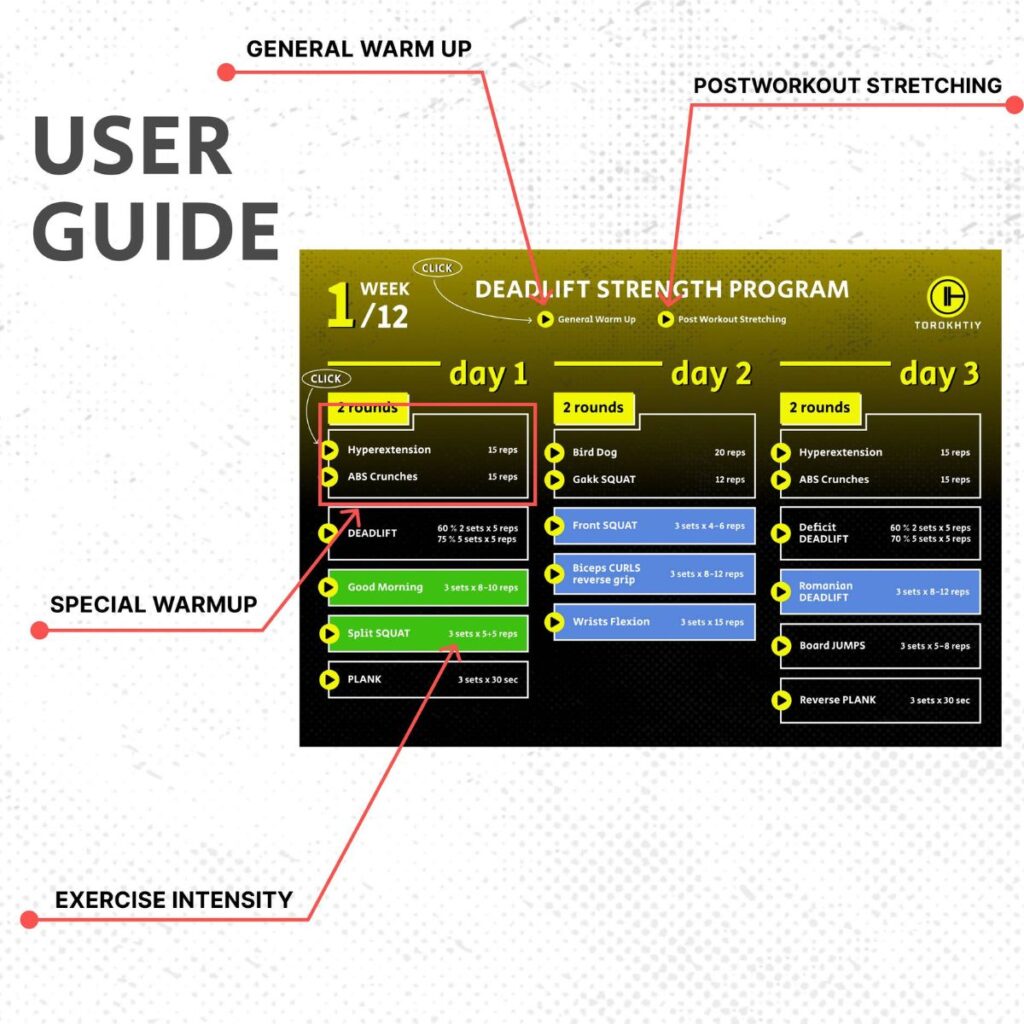
Still have questions after reading our article? Unlock your full potential by engaging with our experts and community! Don’t hesitate — leave a comment below and Sergii Putsov will provide a personalized answer and insights to help you reach your goals.